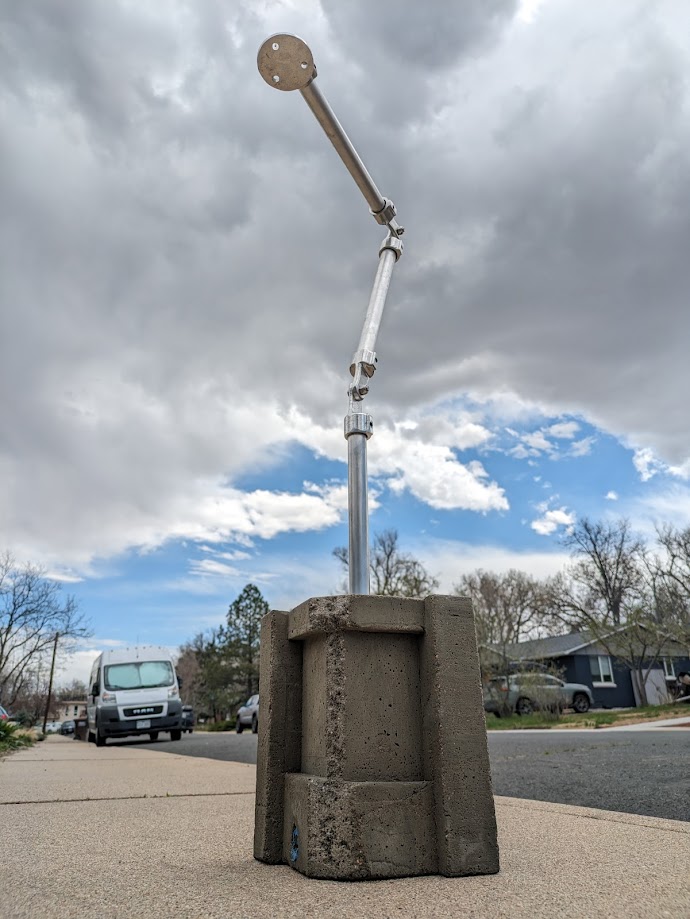My Vision:
I chose to design and build a brutalist desk lamp for my final project. For the aesthetic of the project, I was inspired by brutalist architecture, specifically the WillVille towers. Most people think these are ugly, but I actually really like how these buildings look (even if they have no air conditioning). In general, I think brutalist architecture is cool because of its monolithic shapes and unique, hostile feel. The harsh concrete lines and jagged shapes are not found in any other form of architecture and it is a cool aesthetic if done well.

(I took this picture)
I wanted my project to be a functional and adjustable desk lamp with an on and off switch. I have been meaning to get a desk lamp for a while now, but I have put off buying one. I thought this project would be a great opportunity learn some new skills, express a brutalist aesthetic, and finally get myself a desk lamp.
My Design


Initially, I was stuck deciding between a brutalist lamp and and early NASA / space age lamp based on the first American lunar lander. Due to manufacturing constraints, I decided on the brutalist lamp. My initial design for this lamp was actually a lot simpler than the final design. I thought that any concrete cast more complex than a simple box would be too difficult, so I decided that it would have to do.


Further on in the design process, I came up with a better looking design that did a better job capturing the brutalist aesthetic. By attaching some 2 by 4s to the inside of my concrete form, I was able to easily add some cool brutalist features to the lamp body. My adjustable arm remained the same, although I did not decide how long to make the arms until the construction was in progress. The arms are made of aluminum tubing and special tube hinges from McMaster-Carr that allow the position of the lamp to be adjusted by hand. In addition to the light turning on and off, this is the dynamic element of my project.

During the mold construction process, I further refined my design to include more inlays because I had some extra wood and I thought it would look cool. After the casting process (which I will describe in detail in the next post), some parts of the concrete broke off due the more complex mold shape. However, this was a blessing in disguise because the final shape was way cooler and more brutalist than anything I could have done using a simple mold. The way that the concrete broke off symmetrically and in such a cool way was a huge stroke of luck and I am glad that it turned out like this.


After assembling my adjustable tubing and wiring up my lightbulb, the lamp is complete! This thing came out way better than I was hoping and it looks awesome. Although it is very heavy, I can pick it up easily with one hand so I count that as a success. My next post will have my detailed fabrication process so stay tuned.


5 Comments. Leave new
[…] Brutalist Desk Lamp – What and Why […]
Hi Alex,
It looks like your lamp turned out well. I think you did an impressive job of keeping the concrete smooth after removing it from the mold. Initially, I was concerned by how big the structure might be for a desk lamp but I think it turned out to be a nice size.
Thanks! I like how the size came out as well.
Alex,
This is awesome and such a unique artifact. It is seldom that concrete is found as a decoration. I would say you nailed the aesthetic. Could you see making a smaller more desktop fitter model in the future?
Yes that would be a fun project!